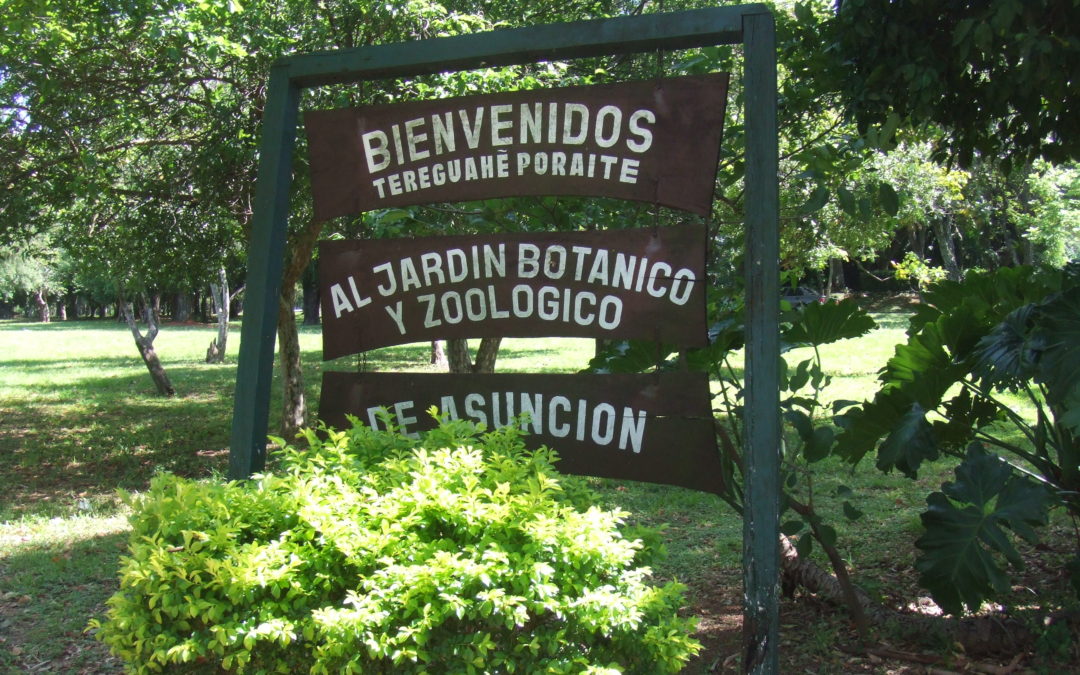Asuncion is a city full of green spaces. One of the largest of which is the Botanical Gardens. These sit on the northern edge of the city and are connected to the center of Asuncion by the Avenida Artigas. This runs from the gates of the Botanical Gardens directly into the center of the city.
Although greatly reduced from the 1500 acres that originally composed the gardens when they were laid out in 1914 they still contain 270 acres. They are a substantial area of green holding back the encroaching city. Once inside the gates the sounds and bustle of the city are soon very distant.
The estate that has become the Botanical Gardens was originally the property of Carlos Antonio Lopez who was the president of Paraguay from 1842 to 1862. A couple of the buildings from that era are still standing and have been restored as museums within the park.
The gardens themselves are a pleasant way to spend a few hours in Asuncion. They are largely laid out as parkland although there are some more heavily wooded areas within the park. These parts though are intended more as conservation areas rather than as places for a gentle stroll.
The large areas of parkland contain many large and interesting trees. The oldest of the trees are in excess of 150 years old and many of them blossom with bright flowers. Many birds find homes here with parrots and other colourful species being common sights.
There is paved road around the gardens for vehicle traffic which takes the most direct route possible. Away from this though across the grass and through the trees are marked numerous footpaths. These are generally circular and are well marked indicating their length and direction.
Areas of the park as well as for walking and picnicking are set aside for camping and sports such as football. The Botanical Gardens also contain the Asuncion Golf Club.
Within the park are two museums. The first of these is the Natural History Museum. This is within the old estate farmhouse. This contains animals both Paraguayan and from elsewhere in the world displayed in various cases and dioramas. In addition there is a room full of jars of pickled curiosities such as the eye of a whale and siamese calves.
This museum also holds the ethnographic collection. Firstly there is a natural mummy from the Andes. Then a number of rooms are laid out to display artifacts from the various indigenous cultures of Paraguay. The accompanying texts are in Spanish but everything is clearly enough laid out to be understood without the written discriptions.
A second building in the gardens holds a Historical Museum. This also in a restored 19th century building. This time a small mansion house. Within it items relating to the history of Paraguay are displayed. There are a number of different displays through different rooms of the museum.
A more recent addition to the Botanical Gardens has been a nursery. This is mainly devoted to medicinal plants. The focus is mainly on the plants which have long been used across Paraguay as traditional medicines. Further to these medicinal plants which over the years have been imported into Paraguay and have become included in its herbal medicine are also grown.
One further feature that the Botanical Gardens hold is the Zoo of Asuncion. This as would be expected in less developed country like Paraguay is just a small zoo holding a small number of mammals, birds and reptiles.
There are some interesting examples of the local fauna to been seen but with the small size of the zoo and its lack of funding the conditions they are kept in are far from ideal. The zoo did receive a major renovation a few years ago before which it was quite grim but even now the conditions are best described as basic.
All in all the Botanical Gardens make for a very pleasant few hours away from the noise and rush of the city center. Best enjoyed on a sunny afternoon with a picnic under a flower filled tree.


Been there many times to jog and never new there were museums. Do you happen to know the hours?
I believe it’s open 6am to 7pm. The Natural History Museum is by where the tarmac road turns towards the Zoo, but the other is a little more hidden away. Neither is huge but they’re worth a look inside